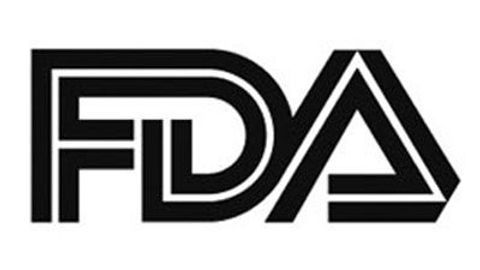FDA Grants Breakthrough Status to Sacituzumab Tirumotecan in EGFR+ NSCLC
The FDA granted breakthrough therapy status to sacituzumab tirumotecan in EGFR-mutated advanced non–small cell lung cancer.

- The FDA granted sacituzumab tirumotecan (SKB264/MK-2870) breakthrough therapy designation (BTD) in patients with advanced or metastatic nonsquamous non–small cell lung cancer (NSCLC) harboring EGFR mutations, whose disease progressed following a tyrosine kinase inhibitor (TKI) and platinum-based chemotherapy.
- This decision is supported by data from a phase 2 expansion cohort of a phase 1/2 study, as well as 2 parts of a separate phase 2 study.
- This marks the first breakthrough therapy designation for the agent in the US.
The FDA has granted BTD to sacituzumab tirumotecan (SKB264/MK-2870) for the potential treatment of patients with advanced or metastatic nonsquamous non–small cell lung cancer (NSCLC) that harbors EGFR mutations and whose disease has progressed on or following a TKI and platinum-based chemotherapy.1
Sacituzumab tirumotecan is a TROP2-targeted antibody-drug conjugate (ADC) featuring a proprietary pyrimidine-thiol linker and a novel topoisomerase I inhibitor with a drug-to-antibody ratio of 7.4.1
Findings from a phase 2 expansion cohort of a phase 1/2 study support this BTD. The study evaluated the use of sacituzumab tirumotecan in patients with EGFR-mutated NSCLC. Further, data from 2 parts of a phase 2 study examining sacituzumab tirumotecan in EGFR-mutated NSCLC that has previously received at least 2 lines of therapy back this regulatory decision.
“This designation by the FDA highlights the importance of developing novel therapeutic options for patients living with EGFR-mutated nonsquamous non-small cell lung cancer,” said Scot Ebbinghaus, MD, vice president of global clinical development at Merck Research Laboratories, in a press release. “We believe ADCs are an important modality in the treatment of cancer and are rapidly advancing the clinical development of sacituzumab tirumotecan, with the goal of meaningfully improving upon current standards of care in certain cancers.”
The nonrandomized phase 2 OptiTROP-Lung01 study (NCT05351788) evaluated the agent in patients aged 18 to 75 years with locally recurrent or metastatic NSCLC without actionable genomic alterations. Enrollment was open to those with an ECOG performance status of 0 or 1, adequate organ function, and patients who did not receive prior systemic treatment.2
Microscopic, photorealistic image of lung cancer cells - Generated with Adobe Firefly

The study evaluated 2 cohorts. Cohort 1A received sacituzumab tirumotecan at a dose of 5 mg/kg every 3 weeks plus KL-A167 given at 1200 mg every 3 weeks, while cohort 1B received the ADC at 5 mg/kg every 2 weeks with KL-A167 900 mg every 2 weeks. Treatment continued until disease progression or unacceptable toxicity.
The primary end points of the study were the incidence and severity of adverse events (AEs) and investigator-assessed objective response rate (ORR), with secondary end points including disease control rate (DCR), duration of response (DOR), progression-free survival (PFS), overall survival, and safety.
At the 2024 American Society of Clinical Oncology (ASCO) Annual Meeting, findings from the study with a data cutoff date of January 2, 2024, were presented.3 In cohort 1 and at a median follow-up of 14.0 months (n = 40), the ORR was 48.6% (95% CI, 31.9%-65.6%) with the combination. This included a confirmed partial response (PR) of 43.2%. The DCR was 94.6%, and the median DOR was not reached (NR; 95% CI, 8.3-not evaluable [NE]). Further, the median PFS was 15.4 months (95% CI, 6.7-NE), and the 6-month PFS rate was 69.2% (95% CI, 51.2%-81.6%).
In cohort 1B, the median follow-up was 6.9 months, and the ORR reached with the combination was 77.6% (95% CI, 64.7%-87.5%), with a confirmed PR rate of 69.0%. The DCR was 100% and the median DOR and PFS were NR (95% CI, 6.6-NE for DOR; 8.4-NE for PFS). The 6-month PFS rate was 84.6% (95% CI, 71.4%-92.1%).
Subgroup analyses in cohort 1B revealed variations based on PD-L1 tumor proportion scores and histology. Across all subgroups, high DCRs and strong PFS rates were observed.
For safety, treatment-related adverse events (TRAEs) were common in both cohorts, with grade 3 or higher events seen in 42.5% of patients in cohort 1A and 54.0% of cohort 1B. Dose reduction or interruptions due to TRAEs were seen in 17.5% and 25.0% of patients, respectively, and 2.5% of patients had TRAEs leading to discontinuation of any drug. The most frequent TRAEs included anemia, neutropenia, nausea, and fatigue, among others.
Sacituzumab tirumotecan is also being studied in combination with pembrolizumab (Keytruda) in 3 ongoing clinical trials in NSCLC (NCT06170788; NCT06422143; NCT06312137).
In October 2024, the agent’s new drug application was accepted for review by the National Medical Products Administration (NMPA)’s Center for Drug Evaluation in China for adult patients with EGFR-mutant locally advanced or metastatic NSCLC who experienced disease progression after EGFR TKIs.4 In November 2024, sacituzumab tirumotecan was approved there for adult patients with unresectable locally advanced or metastatic triple-negative breast cancer who have previously received at least 2 systemic therapies, including 1 or more in the advanced or metastatic setting.5
REFERENCES
FDA grants breakthrough designation to sacituzumab tirumotecan (sac-TMT) for the treatment of certain patients with previously treated advanced or metastatic nonsquamous non-small cell lung cancer with EGFR mutations. News release. Merck. December 3, 2024. Accessed December 4, 2024. https://tinyurl.com/ab5w9bej
SKB264 combination therapy in patients with advanced or metastatic non-small cell lung cancer. ClinicalTrials.gov. Updated December 14, 2024. Accessed December 4, 2024. https://clinicaltrials.gov/study/NCT05351788
Fang W, Wang O, Cheng Y, et al. Sacitizumab tirumotecan (SKB264/MK-2870) in combination with KL-A167 (anti-PD-L1) as first-line treatment for patients with advanced NSCLC from the phase II OptiTROP-Lung01 study. J Clin Oncol. 2024;42(suppl 16):8502. doi:10.1200/JCO.2024.42.16_suppl.8502
Kelun-Biotech's TROP2-ADC SKB264 (sac-TMT) Third NDA Accepted by NMPA, locally advanced or metastatic EGFR-mutant NSCLC. News release. Sichuan Kelun-Biotech Biopharmaceutical Co., Ltd. October 31, 2024. Accessed December 4, 2024. https://en.kelun-biotech.com/newsCenter.aspx?mid=18
Kelun-Biotech’s TROP2 ADC sacituzumab tirumotecan (sac-TMT, 佳泰莱) approved for marketing by NMPA Of China for 2L+ advanced or metastatic TNBC. News release. Sichuan Kelun-Biotech Biopharmaceutical. November 27, 2024. Accessed December 4, 2024. https://en.kelun-biotech.com/newsCenter.aspx?mid=18







